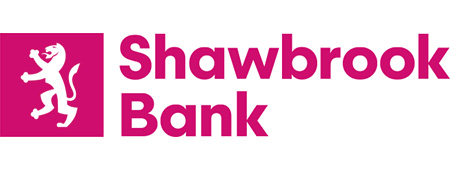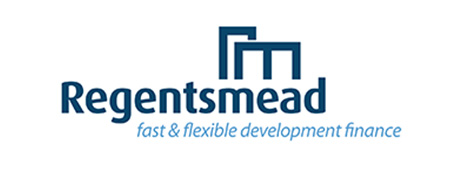Best Bridging Loans for Property Development
If you’re looking for temporary finance to help you manage your property development business, then compare the best deals below.
Property Dev Bridging Loans – At a Glance
Here are some essential tips before you choose your bridging loan:
- Consider how fees may affect your cashflow.
- Lowest interest rates don’t always equal the cheapest loan.
- Consider your exit route.
- How much risk can you accept?
- Have a backup plan just in case things take longer.
You can compare the best deals below, and read the full guide.
Skip To Section
Compare the Best Bridging Loans for Property Development Below
We’ve compared the best deals from around the UK, to come up with a set of loans that have low fees and interest rates, to offer you the best total cost.
1. Best Up To 2 year Low Interest Rate Bridging Loan – Shawbrook Bank
Maxiumum LTV 75%.
1 month – 2 years loan duration.
£50,000 – £15,000,000 loan amount.
0.55% – 0.98% Monthly interest.
2. Lowest Interest Rate Short Term Bridging Loan – Together Money
1st Charge: 75% LTV Max, 2nd charge: 65% LTV max.
1 month – 1 year loan duration.
£26,000 – £5,000,000 Loan value.
0.49% – 1.55% Monthly Interest.
Highest Loan-to-Value Bridging Loans – Shawbrook Bank
Maxiumum LTV 75%.
1 month – 2 years loan duration.
£50,000 – £15,000,000 loan amount.
0.55% – 0.98% Monthly interest.
Lowest Loan-to-Value Bridging Loans – Regentsmead
Maximum LTV 50%.
6 month – 18 month loan duration.
£100,000 – £2,000,000 loan amount.
0.75% – 1.5% Monthly interest.
About Property Development Bridging Loans
How do I choose the correct bridging loan for property development?
There are several important considerations to make before deciding on the right bridging loan for property investment. Along with the interest rates and fees on offer, the borrower needs to consider the exit route, risk level, and what to do if things go wrong and the loan must be carried longer than initially planned.
The first step then, is to compare the rates and get a good idea of the options. A comparison site is the best way to do this quickly and in an organised way. A decent list is included here.
What is the best way to choose property finance?
As you’ll quickly see, the rates are considerably higher than what is available for standard mortgages, or even BTL mortgages. The increased risk, and short-term nature, of these loans mean that lenders – banks and private lenders alike – attach a higher rate to monies lent out in this way.
In addition to the rates, it is important to understand the implications of first and second charge status. If a lender is first charge status, that means that they get paid first from any monies recouped in the event of a default. Second charge status means that they get paid after the first charge lender gets paid. This is usually when there is an existing mortgage for which the original lender already occupies the first charge position. Because there will be less money available in the event of a default, or perhaps none at all, rates for loans in second charge position are higher, to compensate the lender for the increased risk.
Since it is financially better to get a bridging loan in first charge position, it is tempting to jump at it any time it may be available, but be cautious. Just because there is not a first charge lender in place, does not mean that it’s the best idea to take out a first charge bridging loan. In some cases, you will need to keep that first charge space open for a BTL mortgage or similar long-term arrangement. Make sure, if you give the bridging loan the first charge position, that it will not cause problems later on, and necessitate locking into a higher-rate loan on a longer term basis.
One way lenders mitigate risk is to set the Loan-to-Value (LTV) rates lower for second charge loans than for first charge. For example, a lender might offer to cover 75% of the value of a property for a first charge loan, but only 65% for a second charge loan. That means that the borrower must come up with an additional 10% of the value. The lender is more invested, and there is likely more equity in the property, both of which decrease the risk for the lender.
These amounts vary from 100% for first charge loans (extremely rare and expensive) to around 50% or sometimes less for second charge loans.
Once the rates and charge position have been covered, consider the loan term you will need. Lenders have set terms anywhere from a month, to three years or more. This is the term during which the agreed-upon interest rate applies, and determines the point at which the loan principle must be repaid in full. A balance should be struck between the time at which you expect to repay the loan, and allowing extra time to mitigate risks in case something doesn’t go according to plan. Investing and developing comes with unforeseen and unpredictable events, so it is always a good idea to have a plan B when borrowing money. Choosing a loan with some flexibility can make the difference between a profitable venture and a financial crisis.
Finally, factor in the fees. Some lenders charge a lower interest rate, but compensate by charging a larger one-time fee for administration or other parts of the process. These start at around £1000 and are often higher.
FAQ’s on Property Development Bridging Loans
What interest rates are there for a bridging loan?
Rates vary among banks and other lenders, but common monthly rates range from 0.49% to 2% or more. These may seem small compared to standard mortgages, but remember that these are monthly rates. When stated as annual rates, this equates to 5.88% to 24% respectively.
Remember to keep an eye on additional fees, as these are often higher when interest rates are lower.
Will a bank give me a bridging loan?
Yes, banks often give bridging loans. They are sometimes considerably slower than specialist bridging-loan lenders, and their criteria for a successful application may be higher – but they may also be less expensive and less likely to have hidden fees or costs in the small print. Secured loans are often more likely to be approved.
What is the longest duration of my bridging loan?
Loan periods vary, from as short as a month, to three or more years. Many loans are interest-only loans, or can even be free of payments, but have a strict deadline at which the loan and any interest must be paid in full. The more flexible the payments, the stricter the deadlines tend to be. The more you make in payments, the more flexible the deadline can be. Be sure to know all of the details before accepting a loan.
What is the difference between 1st charge and 2nd charge bridging loans?
In the event that you default on your loan, the property is sold and the first charge lender is paid first from the monies received. If there is any left over after the first charge lender is paid, then the second charge lender is paid from that.
Since there is more risk associated with being in the second charge position, rates for second charge loans tend to be higher.
Is a shorter term bridging loan always better?
This depends on your situation. A shorter term is generally less expensive, as the interest is carried for a shorter period of time. A longer term may be better, however, if there are delays or other complications with the development. Instead of hitting your deadline and incurring extra fees or danger of a demand to repay the loan, you have time to solve the problems without everything collapsing. This can wind up salvaging some profit from an otherwise disastrous project.
Can I get more money than I initially agreed to?
In most cases, this is not a problem for the lender. Rates may increase – and they were already considerably higher than a standard or BTL mortgage – and there may be additional fees incurred, but most lenders will allow for extensions as long as they are receiving payments and are making a good return on the money they have invested.
Can I use my bridging loan for different types of property?
Regardless of the kind of property you are investing in, a bridging loan is probably available for it. You can borrow to develop a house, flat, shop, commercial unit, warehouse or even raw land.
Likewise, when securing a bridging loan, you can put up almost any kind of property for collateral as well. You can arrange a loan for a shop, using a home as security, or use raw land as security to get a loan for a home – whichever combination you like, so long as the value is there to mitigate the lender’s risk.
Obviously using property that you own outright will result in better rates, higher chances of approval, and more flexibility – all because lender risk is low – but it is possible to borrow against property that has outstanding loans against it. In this case, the bridging loan would be in the second charge position, would incur higher rates and lower flexibility, but may be suitable to help you develop your portfolio further and bring about your goals in the long run.
Careful planning and consideration is key in either case.
Can I use a bridging loan to finance my property development?
Since property development is often a matter of purchasing, adding value, and selling as quickly as possible, a bridging loan is a popular method of financing.
These opportunities are often time-sensitive, and bridging loans appeal because of the speed with which they can be approved and applied to a sale. The quick turnaround means that the higher interest rates are not paid for a long period of time, which makes them affordable within the financial scope of the project.
Even in cases where the property has been acquired through a different stream of financing, there are situations in which more money is needed than initially projected, and a bridging loan can be an effective way to get a project finished and ready for sale.
For example, if a project is nearing completion and the available funds have been spent, but an unforeseen cost arises – faulty electrics or plumbing that had not been detected earlier – then additional funds may need to be procured to fix the problem. Without this, the property may be unsalable, or may sell for below market value due to the hassle and cost the new buyer would be taking on. In this kind of situation, it is better for the developer to get the additional money, fix the problem, and sell the property at the full value expected. It can mean the difference between a small drop in profit, and a net loss.
Can I get a bridging loan to renovate an uninhabitable home?
If you are hoping to renovate an uninhabitable property and sell it on once it is suitable for habitation, most high street lenders will not be interested. These are considered high risk loans, as properties that have been uninhabited for a period of time have not only the initial problem that made the building uninhabitable, but there are often unseen complications and knock-on problems caused by the initial issue.
A water leak problem, for example, may cause mould and electrical issues. Wood rot and infestations may soon follow. What was initially a single problem may quickly become several major issues.
Bridging loan specialists, however, tend to be more willing to finance these higher risk projects, as they receive higher rates for the risk they take on.
If a project like this is carefully planned, quickly executed, and the developer lucky enough to avoid major knock-on problems, then these projects can be quick and lucrative.
Can I use one to add value to my investment with planning permission?
Sometimes there are deals on properties that need work, but lack the planning permission to have the needed work done. Traditional lenders tend not to approve loans for properties like these, again because they are seen as high-risk situations.
A bridging loan can be used to secure the property, allowing you to gain the planning permission needed to have the work done. The moment the permission is granted, the value of the property increases, as the work may now be done. You can do this yourself, or sell on the property with permission in place.
If you plan to keep the property, or planned development may take a long enough time, a lower cost loan may be procured to pay off the bridging loan. Which way you go depends on your exit route and development strategy.




